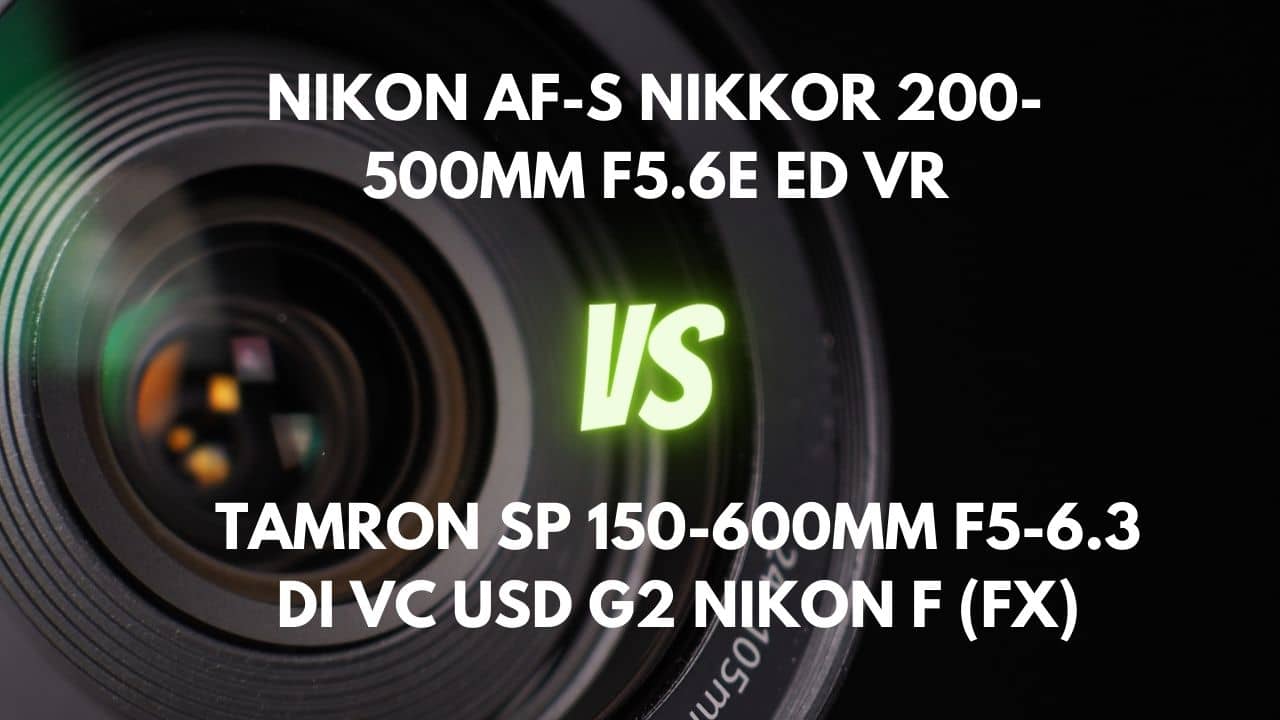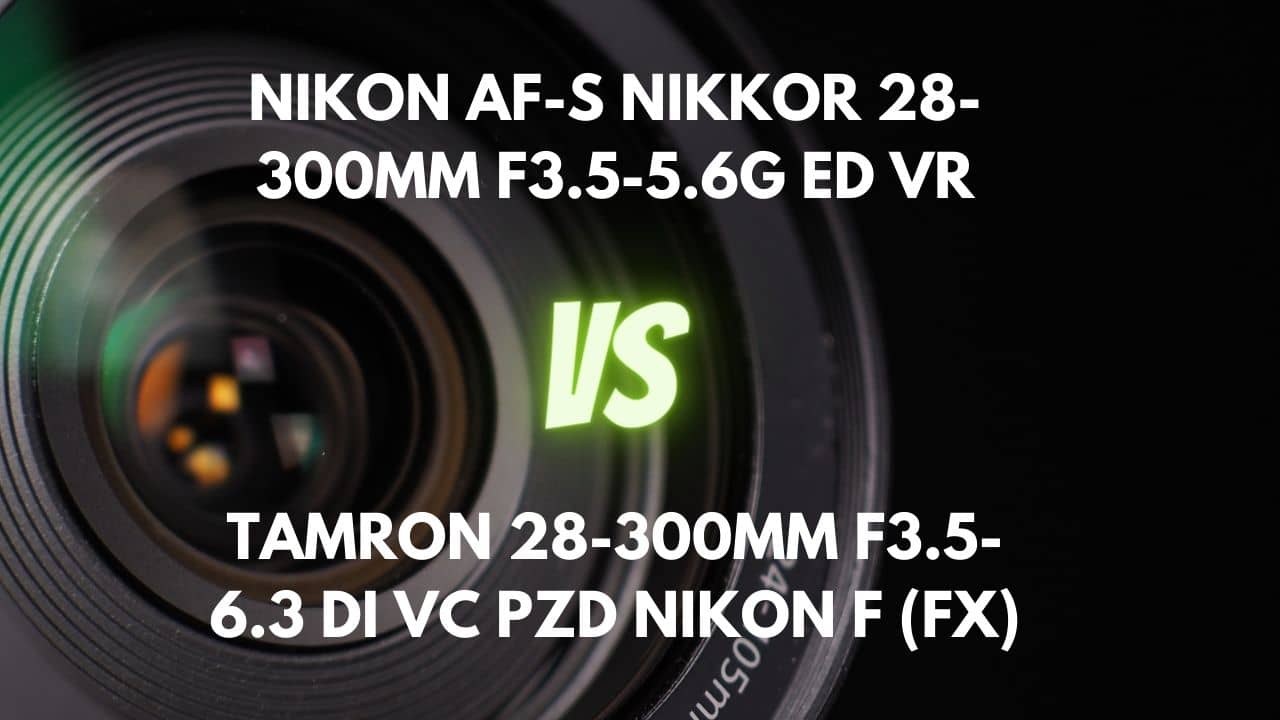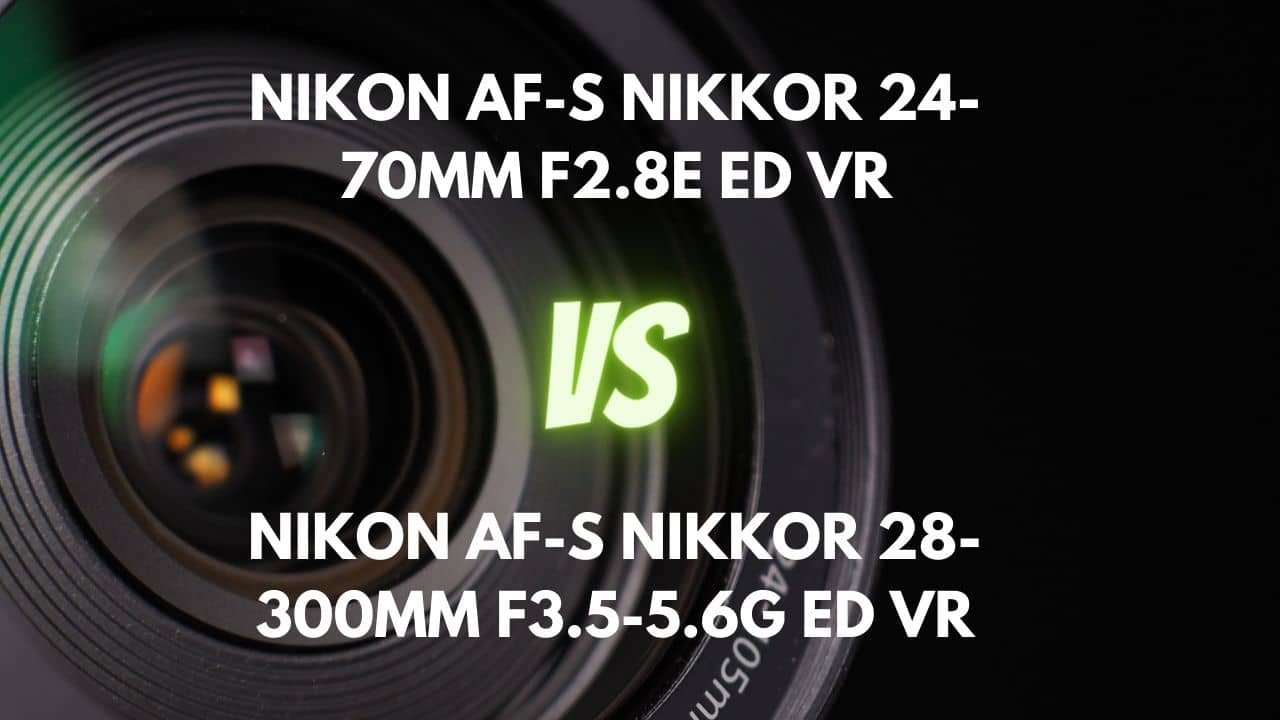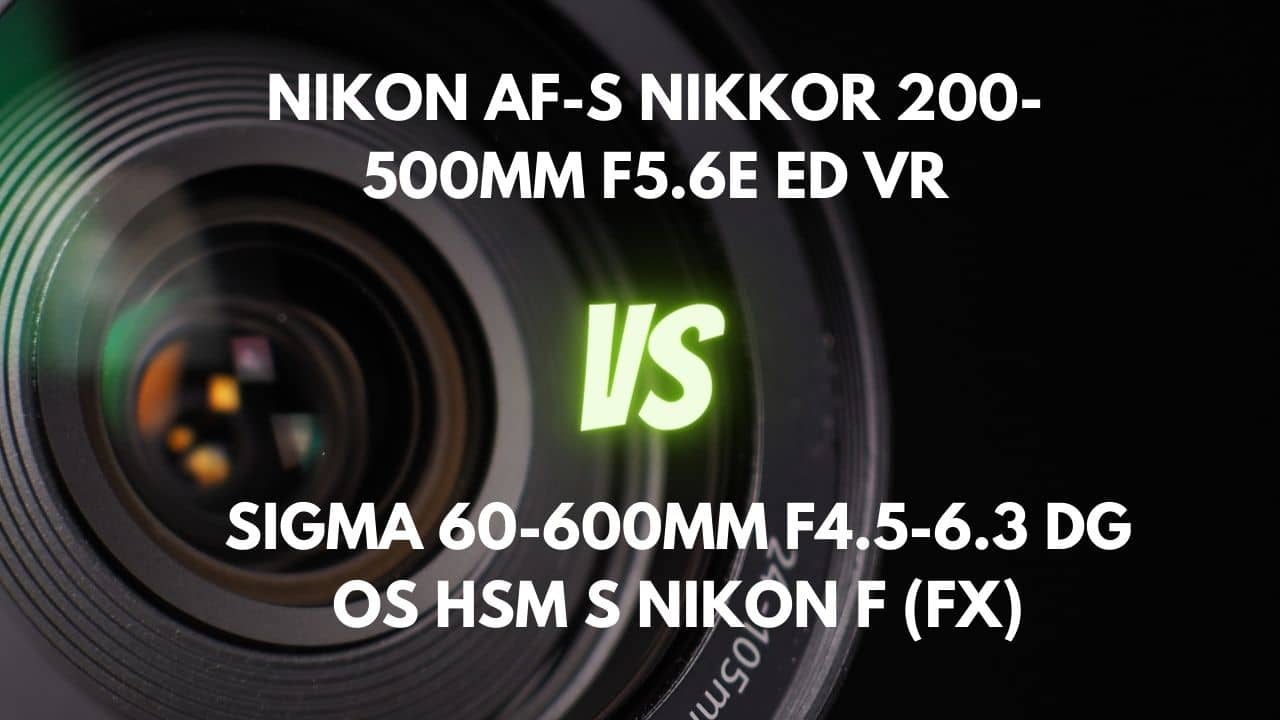Are you a passionate photographer seeking the perfect lens to capture stunning images across various genres?Delve with us into a profound analysis of two exceptional lenses as we compare and contrast their unique features: the versatile Nikon DX 18-200mm f/3.5-5.6 and the telephoto-centric Nikon DX 55-200mm f/4-5.6.
With their unique features and capabilities, these lenses cater to diverse photography needs, from wide-angle landscapes and architectural marvels to intimate portraits and thrilling wildlife shots.
In this comprehensive article, we’ll explore the strengths and weaknesses of both lenses, taking into account factors such as focal lengths, focusing performance, optical stabilization, sharpness, bokeh quality, and more.
Whether you’re an amateur photographer looking to up your game or a seasoned professional seeking the perfect addition to your gear, our in-depth analysis will help you make an informed decision that suits your specific requirements.
Join us on this captivating journey as we reveal the benefits and trade-offs of each lens, empowering you to capture the world through your lens with precision and artistry. Get ready to unleash your creativity and take your photography to new heights!
Overview
| Nikon AF-S DX NIKKOR 18-200mm F3.5-5.6G ED VR II | Nikon AF-S DX NIKKOR 55-200mm F4-5.6G ED VR II | |
|---|---|---|
| Max Aperture | F3.5-5.6 | F4.0-5.6 |
| Aperture Type | Variable | Variable |
| Focal Range (mm) | 18-200 | 55-200 |
| Max Format | APS-C / DX | APS-C / DX |
| Zoom Ratio (X) | 11.1 | 3.6 |
The Nikon DX 18-200mm f/3.5-5.6 has a wider zoom range than the Nikon DX 55-200mm f/4-5.6, with a zoom ratio of 11.1 compared to 3.6 for the 55-200mm lens. This means that the 18-200mm lens can cover a wider range of focal lengths, from wide-angle to telephoto, making it more versatile. The 55-200mm lens, on the other hand, is more limited in its focal length range and is more suitable for medium telephoto photography.
The 18-200mm lens has a variable maximum aperture of f/3.5-5.6, while the 55-200mm lens has a slightly smaller maximum aperture range of f/4.0-5.6. A larger maximum aperture allows more light to enter the camera, improving low-light performance and providing a shallower depth of field for better subject isolation. However, the difference in maximum aperture between these two lenses is relatively small, and the choice of lens depends on the specific needs of the photographer.
Both lenses are designed for APS-C/DX format cameras, which means that they have a smaller sensor size than full-frame cameras. This affects the effective focal length, with the 18-200mm lens having an effective focal length of approximately 27-300mm and the 55-200mm lens having an effective focal length of approximately 82-300mm.
The 18-200mm lens is more suitable for a wide range of photography genres, including landscape, travel, and portrait photography. The 55-200mm lens, with its narrower focal length range, is more suitable for telephoto photography, including wildlife, sports, and portrait photography.
The 18-200mm lens is a variable aperture lens, which means that the maximum aperture changes as you zoom in or out. In contrast, the 55-200mm lens is also a variable aperture lens but has a narrower range of focal lengths, making it more suitable for specific photography genres.
In conclusion, the 18-200mm lens is superior to the 55-200mm lens in terms of its wider zoom range and versatility in handling a range of photography genres. However, the 55-200mm lens may be more suitable for photographers who prioritize telephoto photography, such as wildlife or sports photography.
Design and Ease of Use
| Nikon AF-S DX NIKKOR 18-200mm F3.5-5.6G ED VR II | Nikon AF-S DX NIKKOR 55-200mm F4-5.6G ED VR II | |
|---|---|---|
| Diameter x Length (mm) | ⌀77×96.5mm | ⌀70.5×83mm |
| Weight (gr) | 565 | 300 |
| Filter Thread (mm) | 72 | 52 |
| Weather Sealing | No | No |
| Zoom Method | Rotary (extending) | Rotary (extending) |
| Distance Scale | Yes | No |
| DoF Scale | No | No |
| Hood Supplied | Yes | Yes |
| Hood Code | HB-35 | HB-34 |
The Nikon DX 18-200mm f/3.5-5.6 has a diameter of 77mm and a length of 96.5mm, making it larger and heavier (565g) compared to the Nikon DX 55-200mm f/4-5.6, which has a diameter of 70.5mm and a length of 83mm, weighing only 300g.
The difference in size and weight between the two lenses can impact portability, balance, discreetness, storage, and lens swapping. The more compact and lightweight 55-200mm lens will be easier to carry around, provide better balance with your camera setup, be less conspicuous in certain situations, take up less space in your camera bag, and be easier to handle when swapping lenses.
Both lenses feature a rotary (extending) zoom method. While extending rotary zoom lenses can be lighter and less complex in design than internal rotary zoom lenses, they also have some drawbacks, such as a change in physical size while zooming, which can make them more cumbersome and harder to handle. Additionally, they may be more difficult to weather-seal and can cause the camera’s balance to change while zooming.
Considering the factors discussed above, the 55-200mm lens is superior in terms of portability, balance, discreetness, storage, and ease of lens swapping, making it a more practical choice for photographers who prioritize these aspects.
Lens Mount and Barrel
The Nikon DX 18-200mm f/3.5-5.6 features a metal lens mount with a rubber ring for environmental sealing, protecting against dust and moisture. This contributes to its durability and longevity. Its lens barrel is also made of metal, providing a smooth finish and a well-designed ergonomic bevel.
However, the lens barrel extends and retracts while zooming, and is susceptible to zoom creep between 28 and 135mm focal lengths. The new version of the lens includes a locking switch to prevent zoom creep during transportation.
On the other hand, the Nikon DX 55-200mm f/4-5.6 has a plastic lens mount, including the bayonet. Although it has a rubber seal for basic dust protection, it is not weatherproof. The lens barrel is mostly made of cheaper plastic, featuring a high-quality Nikon entry-level finish. Similar to the 18-200mm lens, the 55-200mm lens also changes its physical size when zooming, extending from 55mm to 200mm.
Comparing the two lenses, the 18-200mm lens offers a more durable and weather-resistant design due to its metal lens mount and barrel. The 55-200mm lens, with its plastic construction, is more lightweight and budget-friendly but may not be as durable or weather-resistant.
Weather Sealing
The Nikon DX 18-200mm f/3.5-5.6 offers some degree of environmental sealing, as it features a rubber ring on its metal mount. However, it is not fully weather-sealed, as there are no internal seals at the rings, switches, and front of the barrel. This provides limited protection against dust and moisture but is not completely waterproof.
In contrast, the Nikon DX 55-200mm f/4-5.6 lacks any significant weather sealing. While there is a rubber seal around the lens mount for basic dust protection, there are no internal seals at the rings, switches, and front of the barrel. Furthermore, the lens does not have a fluorine coating on the front element for additional protection.
Rings
The Nikon DX 18-200mm f/3.5-5.6 boasts two well-designed rings: a zoom ring and a manual focus ring. Both are strategically placed for easy operation, with the zoom ring allowing for smooth transitions across its range. The manual focus ring features a ridged rubber grip that rotates through approximately one-third of a turn, offering precise control.
The lens also includes a zoom lock switch to prevent zoom creep, although it can be inconvenient as it requires unlocking before use. A useful recessed distance scale is provided, displaying settings for 0.5, 1, and 3 meters, plus infinity.
On the other hand, the Nikon DX 55-200mm f/4-5.6 is equipped with a wide, ridged zoom ring and a thin plastic focus ring at the front of the outer barrel. The focus ring has a short focus path, which makes achieving accurate manual focus quite challenging.
The lens lacks a windowed distance scale or depth-of-field indicator, but it does include a zoom lock to secure the position when needed. The zooming action can feel rough, and the overall tactile experience of the rings is somewhat gritty.
Comparing the two lenses, the 18-200mm lens offers superior rings in terms of ergonomics, precision, control, and build quality. The well-designed placement and smooth operation of the rings make it a more enjoyable and efficient lens to work with.
The 55-200mm lens falls short in providing precise control and a satisfying tactile experience, which can affect the overall photography process. Therefore, the 18-200mm lens emerges as the clear winner in terms of ring design and functionality.
Switches/Buttons
The Nikon DX 18-200mm f/3.5-5.6 comes with three slider switches conveniently located on the side of the lens barrel, just behind the focusing ring. These switches offer easy control over M/A and M focusing modes, VR on/off, and Normal and Active VR settings. The thoughtful design of these switches/buttons ensures a user-friendly experience.
In contrast, the Nikon DX 55-200mm f/4-5.6 is equipped with a few essential switches. A focus mode switch on the lens allows toggling between autofocus (A) and manual focus (M), while a separate VR on/off switch enables or disables the Vibration Reduction system. However, this lens lacks a focus limiter and additional Active or Sport modes for the VR system. The switches are still located on the side of the lens, making them easy to access and use.
Comparing the two lenses, the 18-200mm lens offers a more comprehensive and better-designed set of switches/buttons, providing a superior level of control and customization for photographers. The 55-200mm lens, while still offering essential functions, lacks the additional VR mode options found in the 18-200mm lens.
Filter Thread
The Nikon DX 18-200mm f/3.5-5.6 features a 72mm filter thread made of metal. Its design ensures that the front element and filter thread do not rotate during focusing, which is convenient for angle-critical attachments and filters such as polarizers and graduated filters. With this lens, using filters is hassle-free and doesn’t require readjustment.
On the other hand, the Nikon DX 55-200mm f/4-5.6 comes with a 52mm filter thread, which has been the standard thread size for Nikon’s manual focus lenses since 1959. Similar to the 18-200mm lens, the filter thread does not rotate on focus, making it easy to use with graduated filters and polarizers.
In comparing the two lenses, the 18-200mm lens offers a larger filter thread size, which may provide more versatility when it comes to filter compatibility and minimizing vignetting. However, filters for this size may be more expensive. The 55-200mm lens has a smaller filter thread size, which might be more cost-effective and compatible with a wider range of Nikon lenses.
Both lenses have non-rotating filter threads, making them convenient for use with various filters. While the choice between the two lenses depends on your personal preferences and existing gear, the 18-200mm lens may be considered superior due to its larger filter thread size and the use of metal for increased durability and longevity.
Lens Hood
The Nikon DX 18-200mm f/3.5-5.6 package includes a lens hood with a bayonet mount, made of plastic and featuring a matte finish. Its ergonomic bevel is smooth, allowing for easy attachment and removal, and it can be rotated smoothly to adjust the angle of the hood. The lens hood provides added protection and helps in reducing lens flare and maintaining image contrast.
The Nikon DX 55-200mm f/4-5.6 package also includes a petal-shaped HB-34 lens hood made of plastic. It offers smooth and consistent resistance throughout the zoom range, ensuring effective reduction of lens flare and glare. The ergonomic bevel and smooth rotation make it easy to adjust and use.
Focusing and Optical Stabilization
| Nikon AF-S DX NIKKOR 18-200mm F3.5-5.6G ED VR II | Nikon AF-S DX NIKKOR 55-200mm F4-5.6G ED VR II | |
|---|---|---|
| Autofocus | Yes | Yes |
| AF Motor | Silent Wave Motor | Silent Wave Motor |
| Rotating Front Element | Does not rotate on focusing | Does not rotate on focusing |
| Min Focus Distance | 0.5m | 1.1m |
| Max Magnification (X) | 0.22 | 0.23 |
| Full-Time Manual Focus | Yes | Yes |
| Focus Method | Internal | Internal |
Focusing Performance
The Nikon DX 18-200mm f/3.5-5.6 features a Silent Wave Motor for autofocusing, which is nearly silent and efficient. Its focusing speed is generally adequate, taking around 1.2 seconds to go from infinity to 50cm and back again. In well-lit situations, autofocus performance is reliable and accurate, while in low-light situations, it may be slightly slower but still satisfactory.
The lens offers a full-time manual focus override, allowing for precise adjustments. Its internally focusing design ensures that the length of the lens remains constant regardless of focus and zoom settings, and the front element does not rotate during focusing.
The Nikon DX 55-200mm f/4-5.6 also features an autofocus system powered by a silent wave motor, offering relatively quiet operation. Focusing speed is fairly quick for a lens at this level, though it may be considered slow for action photography. The initial autofocus acquisition speed is decent, and the lens can focus accurately in most situations. However, in low-light conditions, performance might be somewhat slower.
This lens lacks a manual focus override, and its manual focus ring is flush to the part of the lens that extends when unfolded, making manual focus adjustments trickier. The focusing ring is not damped, and the lens does not feature an internally focusing design.
In conclusion, the 18-200mm lens offers superior focusing performance due to its nearly silent and efficient Silent Wave Motor and full-time manual focus override. The 55-200mm lens is still a decent performer but falls short when compared to the 18-200mm lens, particularly in terms of manual focus capability and overall focusing design.
Optical Stabilization
The Nikon DX 18-200mm f/3.5-5.6 features Nikon’s second-generation VR II vibration reduction system, which claims to allow handholding at shutter speeds 3.5 stops lower than usual. The mechanism is near-silent in use, with just a very quiet whirring noise when operational, and distinct clicks when it activates and deactivates. The lens has 2 VR modes – Normal and Active, providing an 80% chance of getting usable results at various shutter speeds across the focal range, allowing for sharp handheld shots even at slower speeds.
The Nikon DX 55-200mm f/4-5.6 has a Vibration Reduction (VR) system with a 4-stop effectiveness that can be a real shot-saver, especially since Nikon DSLRs have no in-body stabilization. The lens is silent, featuring an on/off switch for VR, but lacks additional Active or Sport modes. The lens allows for hand-held shots at shutter speeds slower than would be possible without the technology, with around half the time at 1/40sec at 200mm, which is around 3 stops slower than the usual rule of thumb would advise.
In conclusion, both lenses offer impressive optical stabilization. The 18-200mm lens has the advantage of two VR modes and a near-silent mechanism, while the 55-200mm lens has a 4-stop effectiveness. However, the 18-200mm lens provides more flexibility with its VR modes and a slightly better overall experience, making it the superior choice for optical stabilization.
Image Quality
| Nikon AF-S DX NIKKOR 18-200mm F3.5-5.6G ED VR II | Nikon AF-S DX NIKKOR 55-200mm F4-5.6G ED VR II | |
|---|---|---|
| Special Elements | 2x ED glass elements and 3x aspherical lens elements | 1 ED glass element |
| Diaphragm Blades | 7 | 7 |
| Circular Aperture | Yes | Yes |
Aberration
The Nikon DX 18-200mm f/3.5-5.6 exhibits some chromatic aberration, with red-green fringing detected at the widest focal lengths. However, this diminishes at longer focal lengths and is easy to correct for. On the other hand, spherical aberration is evident, as focus shifting is required when apertures are stopped down, which is likely a consequence of the extended zoom design.
The Nikon DX 55-200mm f/4-5.6 showcases low levels of chromatic aberration throughout the zoom range, with levels barely exceeding a quarter of a pixel width at any point. Chromatic aberration can be detected in shots taken at or near the longer end of the zoom range, but it is not too prominent. Furthermore, the lens does not exhibit significant coma or spherical aberration.
In conclusion, the 55-200mm lens performs better in terms of aberration control, displaying lower levels of chromatic aberration and minimal coma or spherical aberration. This makes the 55-200mm lens the superior choice when considering aberration performance.
Sharpness
The Nikon DX 18-200mm f/3.5-5.6 demonstrates impressive sharpness for an F-mount superzoom, particularly at short to mid zoom settings. Center sharpness is generally excellent throughout the focal range, while corner sharpness may be slightly weaker at wider apertures but improves when stopped down. The sharpest apertures typically range from f8 to f11.
At longer focal lengths, such as 135mm and f5.6, image quality can be visibly impacted, but stopping down to f11 can yield better results. Although not as sharp as some prime lenses or more specialized zoom lenses, this lens delivers sharp images and offers a versatile and convenient zoom range with a good balance of sharpness and image quality.
The Nikon DX 55-200mm f/4-5.6 exhibits good sharpness throughout most of its focal range, with outstanding center sharpness at 55mm and excellent edge performance. When zoomed to 105mm, the center sharpness remains very good, but edge sharpness drops to fair levels. Stopping down to f/8 improves performance at this focal length. At 200mm, sharpness declines further, with good center clarity and fair edge performance.
Stopping down to between f/8 and f/16 results in very good center sharpness and good edge clarity. The sharpest aperture tends to be in the f/8 to f/11 range for most focal lengths, and the lens performs well when stopped down. However, sharpness is not as impressive when shooting wide open, especially at longer focal lengths like 200mm.
In conclusion, the 18-200mm lens provides better overall sharpness throughout its focal range, while the 55-200mm lens offers good sharpness but struggles at longer focal lengths. Thus, the 18-200mm lens is the superior choice when considering sharpness performance.
Bokeh Quality
The Nikon DX 18-200mm f/3.5-5.6 is capable of delivering smoothly blurred out-of-focus regions, particularly at 200mm f/5.6, but the bokeh is not entirely smooth. Hard-edged specular highlights can give a harsh appearance to defocused areas, and although appealing results can be achieved with careful selection of the background, some users have reported distracting and nervous bokeh that required additional post-processing to smooth out.
On the other hand, the Nikon DX 55-200mm f/4-5.6 produces quite pleasing bokeh, thanks to its seven rounded iris diaphragm blades. The bokeh is often described as smooth, creamy, and attractive, which is impressive considering the lens’s budget price point.
In conclusion, the 55-200mm lens offers superior bokeh quality compared to the 18-200mm lens, delivering smoother and more pleasing out-of-focus areas. This makes it a better choice for photographers seeking to create images with an appealing background blur.
Flare/Ghosting
The Nikon DX 18-200mm f/3.5-5.6 exhibits minimal flare and ghosting, as long as it is not pointed directly into the sun. When forced to flare, it produces starbursts, rainbow effects, and circular patterns of various colors, which can be seen in sample images.
However, contrast is not significantly affected. The lens handles flare relatively well, especially compared to some other lenses in its class, and its complex optical construction allows for intricate flare patterns at small apertures.
In contrast, the Nikon DX 55-200mm f/4-5.6 effectively minimizes flare and ghosting thanks to the Super Spectra Coating applied to its elements. This coating helps reduce the impact of stray light entering the lens, ensuring better contrast and color fidelity in the captured images.
Although flare and ghosting might still occur in certain challenging lighting conditions, the Super Spectra Coating does a commendable job in mitigating these issues for improved image quality.
In conclusion, the 55-200mm lens has superior flare and ghosting performance due to the Super Spectra Coating, which helps maintain better contrast and color fidelity in images.
Vignetting
The Nikon DX 18-200mm f/3.5-5.6 shows occasional vignetting, particularly at wider focal lengths. However, compared to its competition, the lens has demonstrated better optical performance in terms of vignetting correction, indicating a good starting point for post-processing. Vignetting can be reduced effectively through software or in-camera correction, but it is always preferable for the lens to produce good results without any digital manipulation.
On the other hand, the Nikon DX 55-200mm f/4-5.6 exhibits noticeable vignetting, particularly at 175mm focal length, with a 2 F-stop difference from the center to the edges of the photograph. This can create challenges when merging multiple images or creating panorama-style photographs using software like Photoshop.
However, the vignetting effect decreases as you stop down the aperture, and at f/8, it is generally not greater than 1/4 EV. Depending on your intended use and shooting conditions, you may be able to mitigate the vignetting issue by adjusting your aperture settings.
In conclusion, the 18-200mm lens has a superior vignetting performance compared to the 55-200mm lens, making it a better choice for photographers who prefer minimal vignetting in their images.
Distortion
The Nikon DX 18-200mm f/3.5-5.6 exhibits noticeable distortion, particularly at the wide-angle end, with prominent barrel distortion resulting in a “mustache” or wavy distortion pattern that may be challenging to correct using simple software tools.
Pincushion distortion becomes more evident between 35mm and 70mm, although it is less complex and can be more easily corrected with software. It is important to note that distortion is mostly an issue in photos with straight lines and may not be a significant problem for subjects like landscapes, portraits, or wildlife.
In contrast, the Nikon DX 55-200mm f/4-5.6 displays moderate pincushion distortion across much of its focal length range, with 0.47% barrel distortion at 55mm and 1.16% pincushion distortion at 200mm. Since the distortion pattern is consistent throughout the entire frame, making corrections in image editing software should be a fairly simple process.
At 85mm, 105mm, and 135mm focal lengths, pincushion distortion is also present but can be corrected with software. Overall, distortion is well controlled for a lens of this type.
In conclusion, the 55-200mm lens has a superior distortion performance compared to the 18-200mm lens, as it displays more uniform and manageable distortion patterns that can be easily corrected with software.
Final Verdict
In conclusion, both the Nikon DX 18-200mm f/3.5-5.6 and Nikon DX 55-200mm f/4-5.6 have their respective strengths and weaknesses, catering to different photography needs and preferences.
The 18-200mm lens is a versatile choice due to its wider zoom range, making it suitable for a range of photography genres. It also offers superior focusing performance, optical stabilization, sharpness, and vignetting performance. Its more durable and weather-resistant design adds to its appeal for photographers who require a sturdy lens.
On the other hand, the 55-200mm lens is a more practical option for photographers prioritizing portability, balance, discreetness, and storage. This lens is ideal for telephoto photography, such as wildlife or sports photography, and offers superior bokeh quality, flare and ghosting control, aberration performance, and distortion control.
When considering focal lengths and their impact on different photography genres, the 18-200mm lens provides greater flexibility, covering wide-angle to telephoto ranges, making it suitable for landscapes, architecture, portraits, and more. The 55-200mm lens, with its narrower zoom range, is more specialized for telephoto photography.






